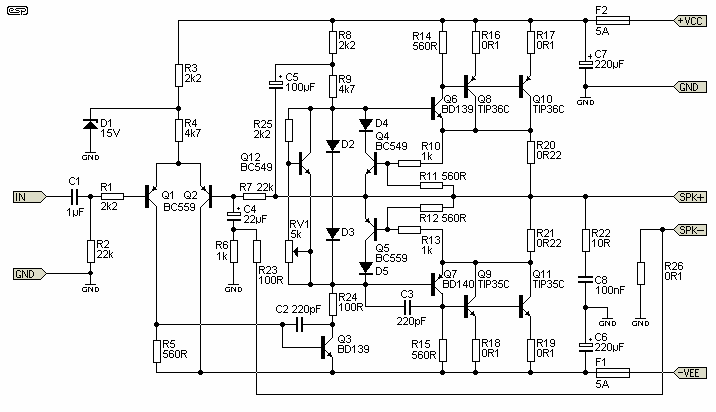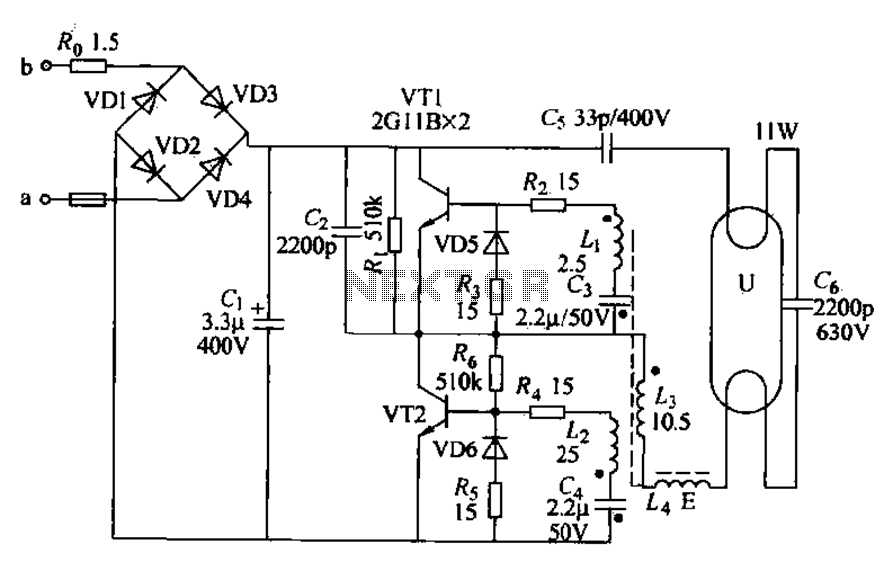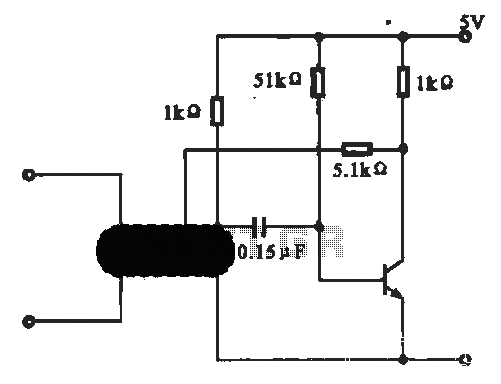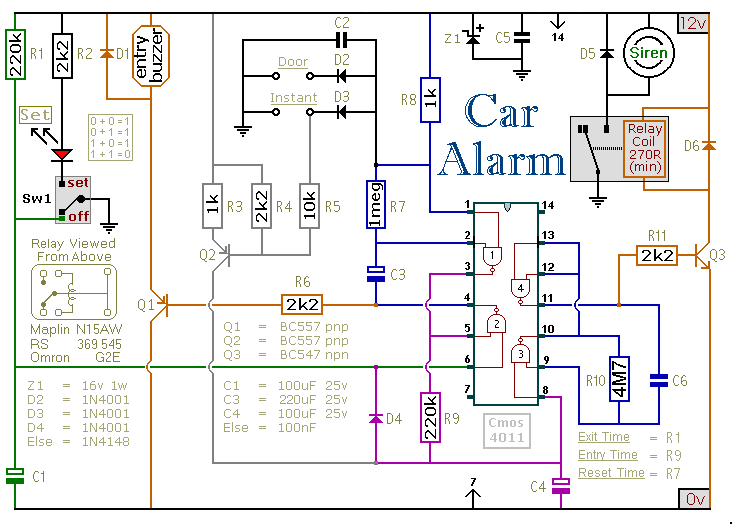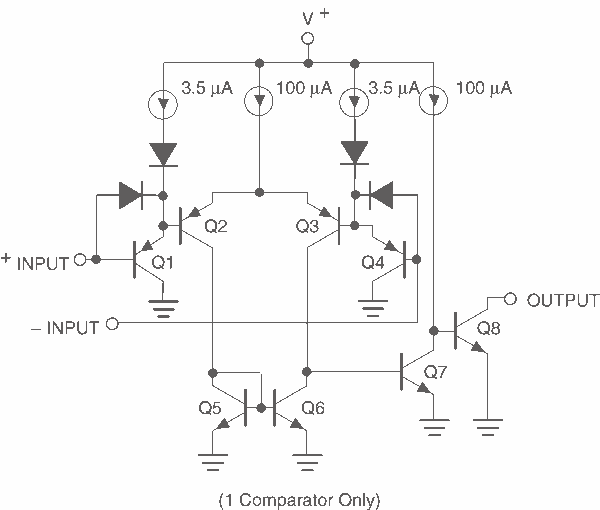
ir transmitter circuit
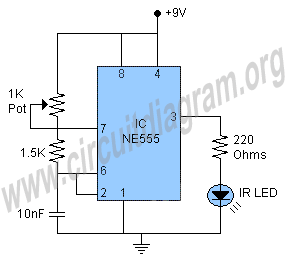
This schematic illustrates an infrared (IR) transmitter circuit utilizing an integrated circuit (IC). The circuit employs the widely recognized NE555 timer IC, which operates as an astable multivibrator to generate a signal with a frequency of 38 kHz. The transmission of the signal is initiated through an IR LED upon connecting a 9V battery to the circuit.
The IR transmitter circuit is designed around the NE555 timer IC, which is configured in an astable mode to produce a continuous square wave output. This output oscillates at a frequency of 38 kHz, which is a common frequency for IR communication, particularly in remote control applications. The NE555 timer has two main resistors (R1 and R2) and a capacitor (C1) connected to its timing pins, which determine the frequency of oscillation.
When the circuit is powered by a 9V battery, the NE555 timer begins to switch its output between high and low states, effectively turning the IR LED on and off rapidly. The IR LED emits infrared light pulses corresponding to the 38 kHz frequency, which can be detected by compatible IR receivers.
To ensure proper operation, the circuit may include additional components such as current-limiting resistors for the IR LED to prevent excessive current flow, and decoupling capacitors to stabilize the power supply and filter out noise. The design can be further enhanced by incorporating a modulation scheme for more complex data transmission, or by using multiple LEDs to increase the transmission range and reliability of the signal.
Overall, this IR transmitter circuit provides a simple yet effective solution for wireless communication applications, leveraging the versatility of the NE555 timer IC in generating a stable frequency output suitable for infrared transmission.This is a schematic of a IR transmitter circuit using IC. The IC used in this circuit is a famous timer IC NE555 which is working as an astable multivibrator in this circuit and producing a 38KHz frequency signal. The circuit starts to produce the signal through IR LED when we connect a 9V battery to the circuit 🔗 External reference
The IR transmitter circuit is designed around the NE555 timer IC, which is configured in an astable mode to produce a continuous square wave output. This output oscillates at a frequency of 38 kHz, which is a common frequency for IR communication, particularly in remote control applications. The NE555 timer has two main resistors (R1 and R2) and a capacitor (C1) connected to its timing pins, which determine the frequency of oscillation.
When the circuit is powered by a 9V battery, the NE555 timer begins to switch its output between high and low states, effectively turning the IR LED on and off rapidly. The IR LED emits infrared light pulses corresponding to the 38 kHz frequency, which can be detected by compatible IR receivers.
To ensure proper operation, the circuit may include additional components such as current-limiting resistors for the IR LED to prevent excessive current flow, and decoupling capacitors to stabilize the power supply and filter out noise. The design can be further enhanced by incorporating a modulation scheme for more complex data transmission, or by using multiple LEDs to increase the transmission range and reliability of the signal.
Overall, this IR transmitter circuit provides a simple yet effective solution for wireless communication applications, leveraging the versatility of the NE555 timer IC in generating a stable frequency output suitable for infrared transmission.This is a schematic of a IR transmitter circuit using IC. The IC used in this circuit is a famous timer IC NE555 which is working as an astable multivibrator in this circuit and producing a 38KHz frequency signal. The circuit starts to produce the signal through IR LED when we connect a 9V battery to the circuit 🔗 External reference
